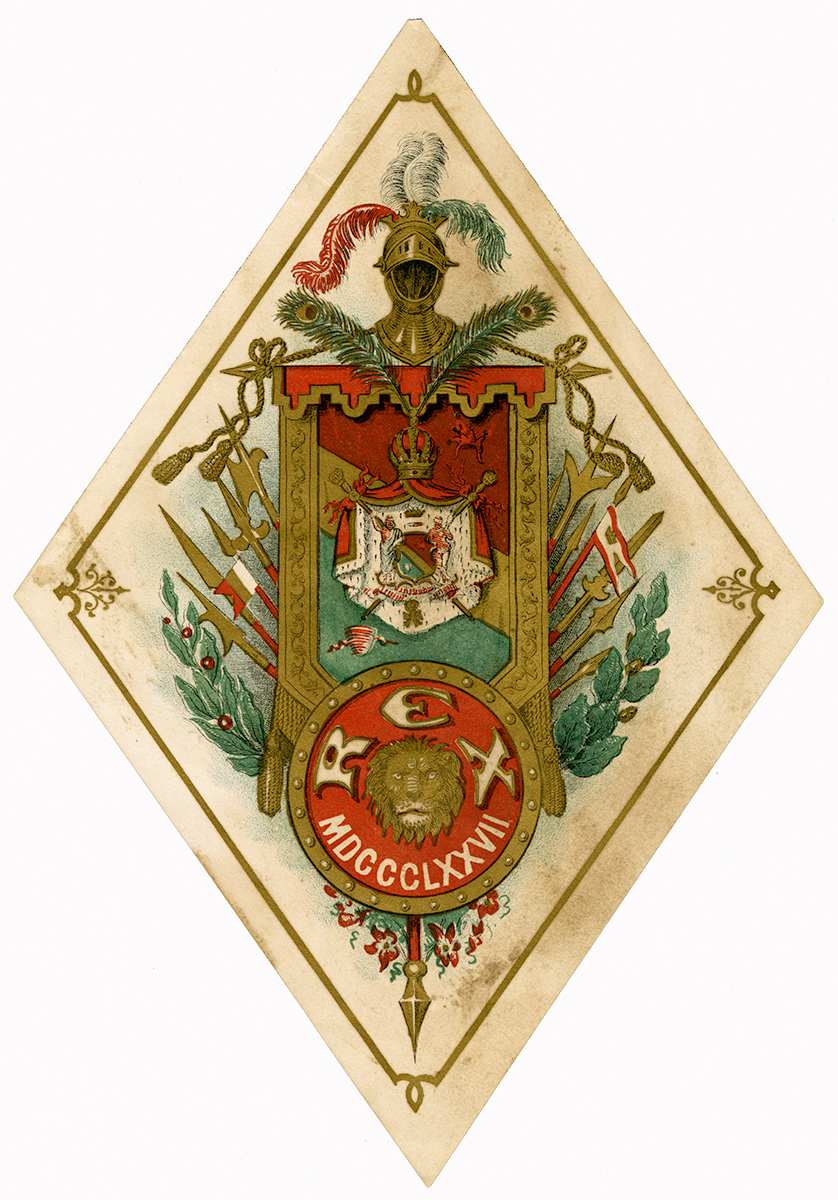Mardi Gras Ephemera
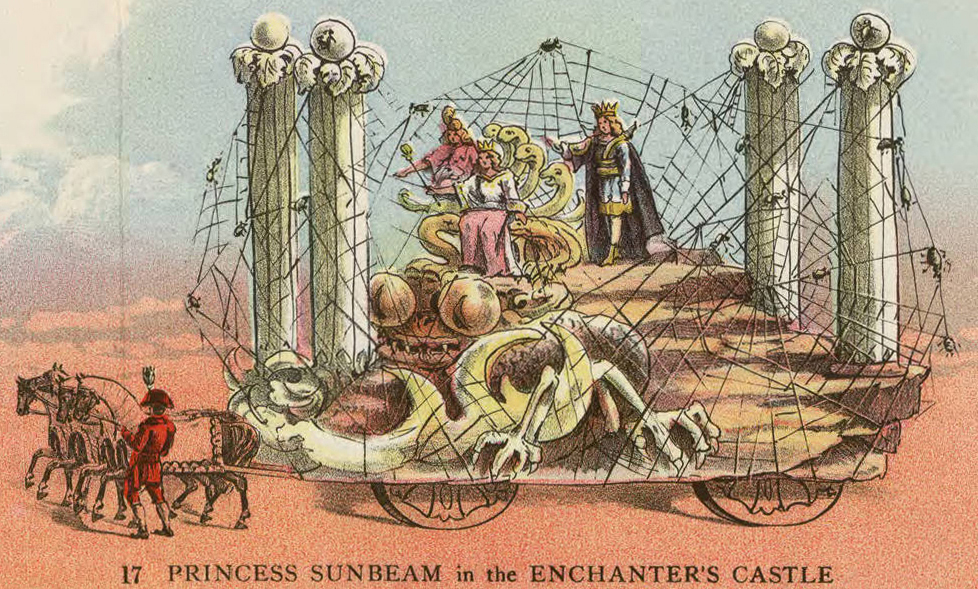 Mistick Krewe of Comus, 1902. “Princess Sunshine in the Enchanter's Castle” float.
Mistick Krewe of Comus, 1902. “Princess Sunshine in the Enchanter's Castle” float.
The Daily Picayune. Special Carnival issue: Feb. 11, 1902; Comus. (New Orleans, La. : F.A. Lumsden & G.W. Kendall) LLMVC MCAGE F379 .N5 D27 SUPP With Carnival season in full swing and Mardi Gras day fast approaching, Hill Memorial would like to highlight a few examples of Mardi Gras ephemera from LSU’s Special Collections. The French brought Carnival traditions overseas to Colonial French Louisiana in the late 17th century. It is unknown when carnival celebrations first took place in New Orleans. Historical records from the 1730s-1740s make mention of established Carnival balls and masking throughout the city. Organization of the first Carnival krewe in New Orleans, the Mistick Krewe of Comus, is dated 1856. The Civil War and Reconstruction shut down Carnival celebrations for several years. Eventually new krewes and societies emerged by 1870 and Carnival experienced a rebirth of sorts. In 1872 Mardi Gras was declared a Louisiana state holiday when Governor Warmoth signed the “Mardi Gras Act”. The formative years of Carnival in New Orleans mark the start of many traditions and customs still carried on today, primarily the use of an annual theme chosen by each krewe. Mardi Gras has grown and evolved over the years to become a true New Orleans institution. Like most things in the Crescent City, Carnival is an amalgamation of cultural traditions representative of its diversified communities.
Early Invitations and Dance Cards
Despite changing times, the mainstay of Carnival has always been spectacle and visual opulence. Early krewes relied on artists and artisans to design and create processional floats, costumes, tableaux and all manner of krewe related ephemera. Lithographers in France and New Orleans replicated these designs printing ball invitations and dance cards. The onset of chromolithography brought imagery and graphic mass production to great heights in the late Victorian era. During the 1880s through the turn of the century, the artistry of Carnival invitations grew with advancements in lithography and mass production technologies like die-cut. Invitations became tiny works of art depicting each krewe’s theme for the season. At this time most Carnival balls were private affairs and required an invitation for admittance. Invitations were so highly prized they were hand-delivered by courier, not by post. By the early 20th century, invitation styles changed and krewes adopted a more modern look. Most of the artist, artisans and printers responsible for establishing early Carnival aesthetics and standards remain anonymous. A handful of known artists and innovators include Charles Briton, Bror Anders Wikstrom, Jennie Wilde, and Carlotta Bonnecaze.
Invitation to the Rex Ball, 1877. Theme: "Military Progress of the World".
Joseph P. Hornor Papers, 1867-1933. Mss. 1471, Louisiana and Lower Mississippi Valley Collections. 
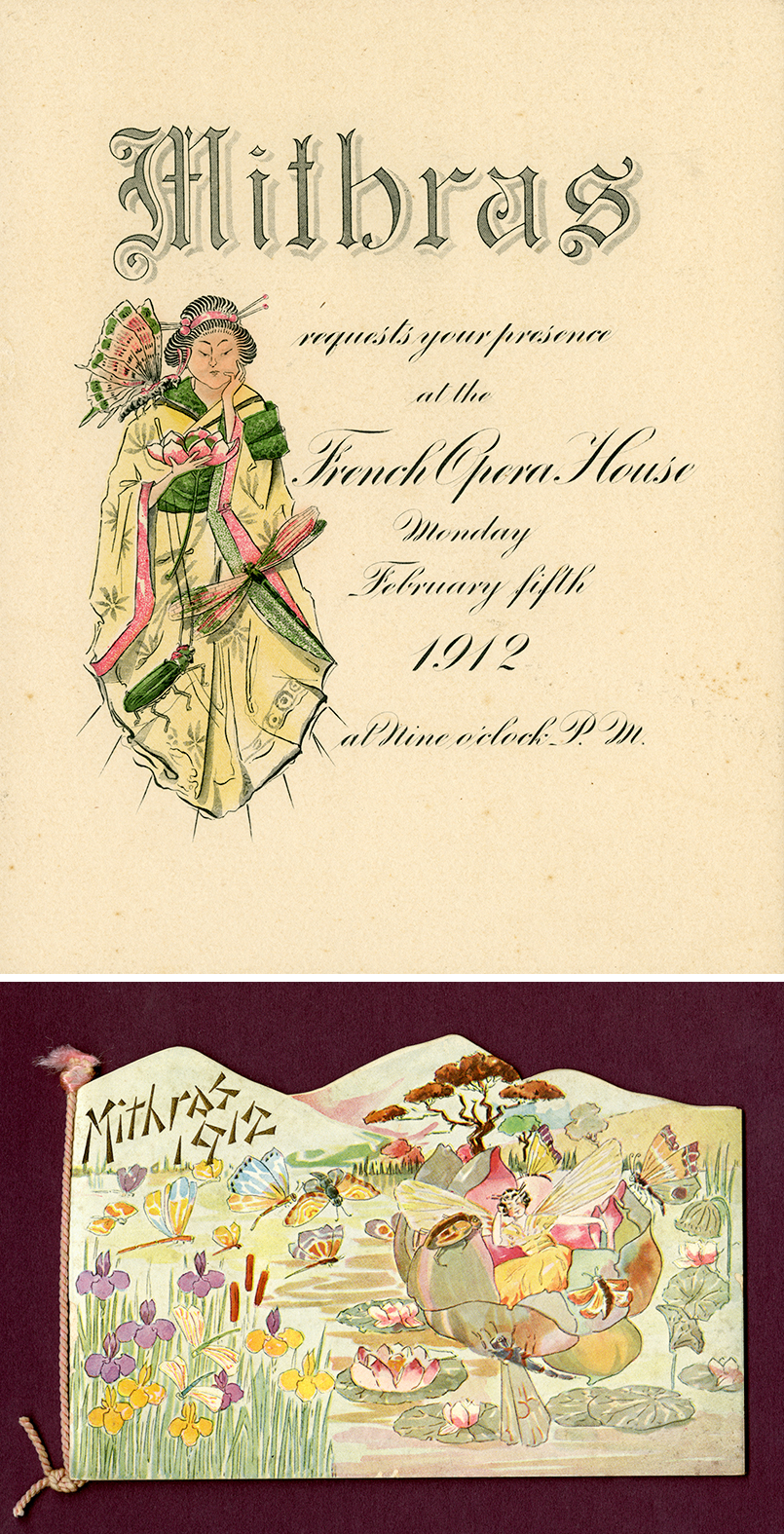 Mithras Ball invitation and dance card, 1912. Theme: “Legend of the Land of the Gods”.
Mithras Ball invitation and dance card, 1912. Theme: “Legend of the Land of the Gods”.
Irby C. Nichols and family papers, 1862-1972. Mss. 3798, Louisiana and Lower Mississippi Valley Collections. 
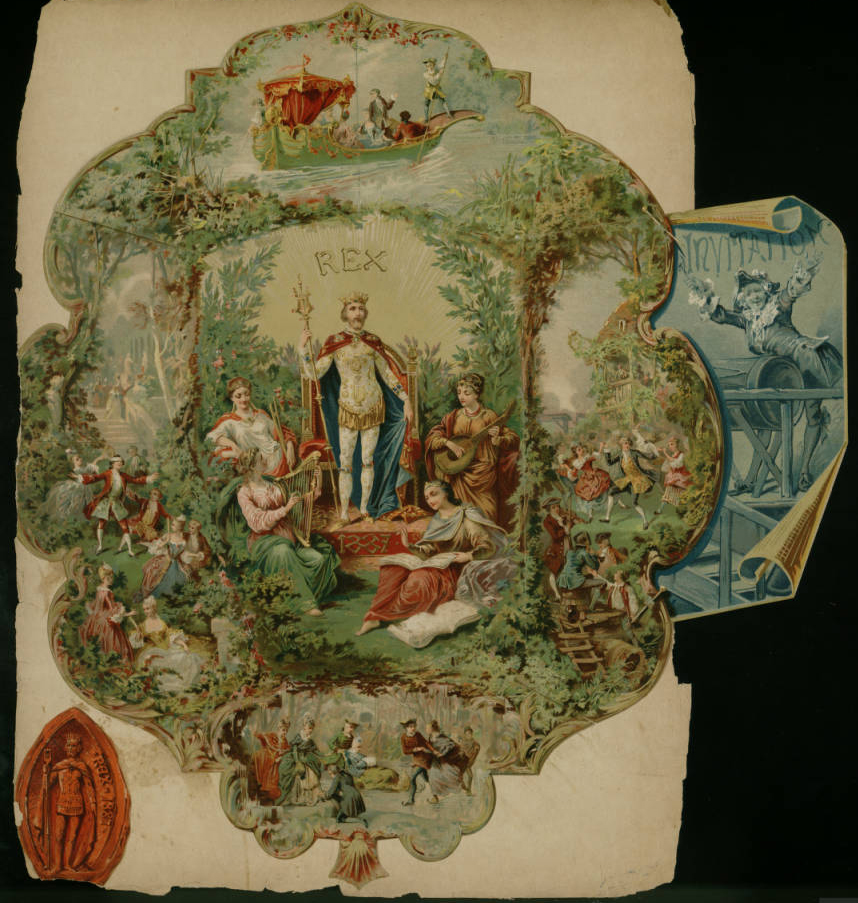 Rex Ball invitation, 1887. Theme: “Music and Drama”.
Rex Ball invitation, 1887. Theme: “Music and Drama”.
Mardi Gras scrapbook, 1871-1907. Mss. 1344, Louisiana and Lower Mississippi Valley Collections.  The Mardi Gras Scrapbook contains material relating to local New Orleans attractions and Mardi Gras in New Orleans, including invitations to balls, event programs and clippings. The entire scrapbook is digitized and available online in the Louisiana Digital Library.
The Mardi Gras Scrapbook contains material relating to local New Orleans attractions and Mardi Gras in New Orleans, including invitations to balls, event programs and clippings. The entire scrapbook is digitized and available online in the Louisiana Digital Library. 
Carnival Editions
The remaining visual records of early Mardi Gras artistry include printed ball invitations and dance cards, as well as Carnival Editions from local newspapers. By 1877, newspapers began printing souvenir editions for Carnival show casing tiny engravings of processional floats. These tiny renderings combined with written descriptions of floats, costumes and tableaux are often all that remains of New Orleans’ earliest parades. Carnival Editions became so popular that newspapers competed for the right to publish. Sometimes up to 30,000 copies were printed and sold on street corners. Carnival editions grew larger as processions grew grander each year. The first full color chromolithography edition was printed in 1886. It depicted the Krewe of Proteus, “Visions of Other Worlds” procession, designed by Carlotta Bonnecaze. Printed Carnival editions contain accounts of every float from 1877-1941, when discontinued. These special edition supplements have become a prized and descriptive record of early Carnival parades.
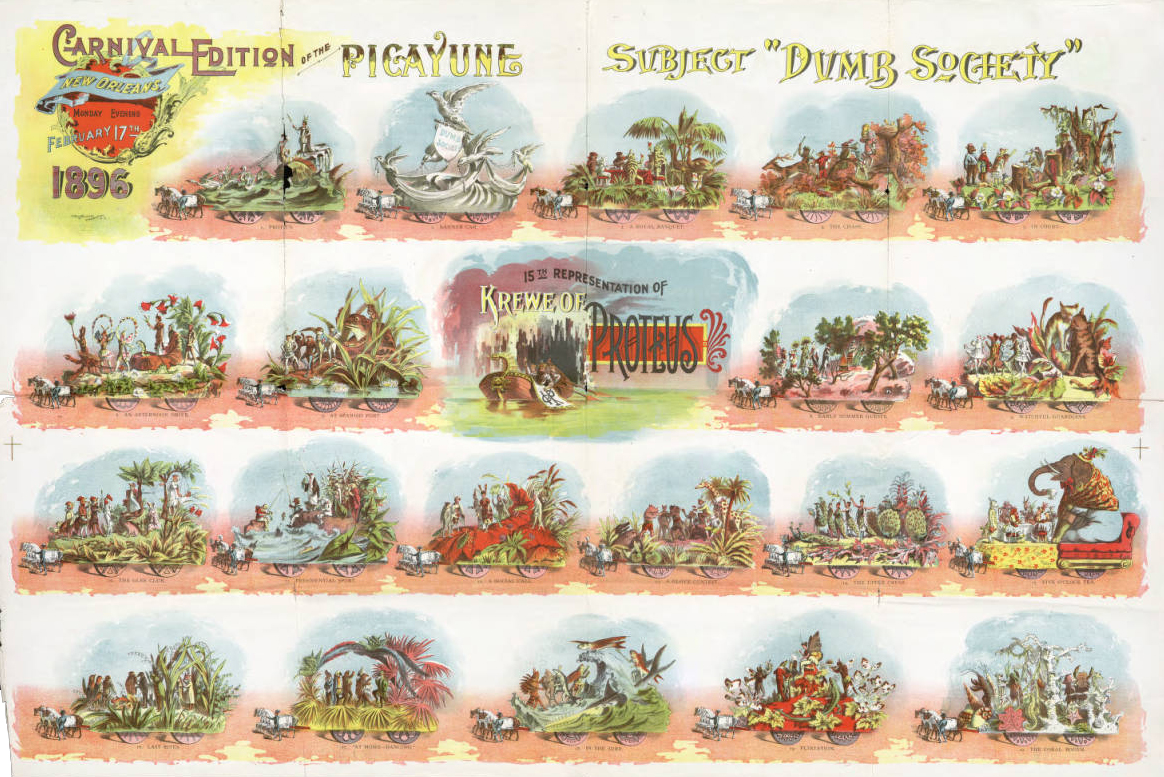 Daily Picayune broadside for Proteus 1896. Theme: "Dumb Society"; designed by Carlotta Bonnecaze
Daily Picayune broadside for Proteus 1896. Theme: "Dumb Society"; designed by Carlotta Bonnecaze
The Daily Picayune. Special Carnival issue: Feb. 17, 1896; Proteus. (New Orleans, La. : F.A. Lumsden & G.W. Kendall) LLMVC MCAGE F379 .N5 D27 SUPP Digitized Carnival Editions from the Daily Picayune are available online in the Louisiana Digital Library. 
Krewe Ephemera
Krewes often printed their own souvenir booklets or programs in addition to ball invitations and dance cards. Most contain artist renditions of floats, and may include brief krewe histories, theme descriptions, and local ads.
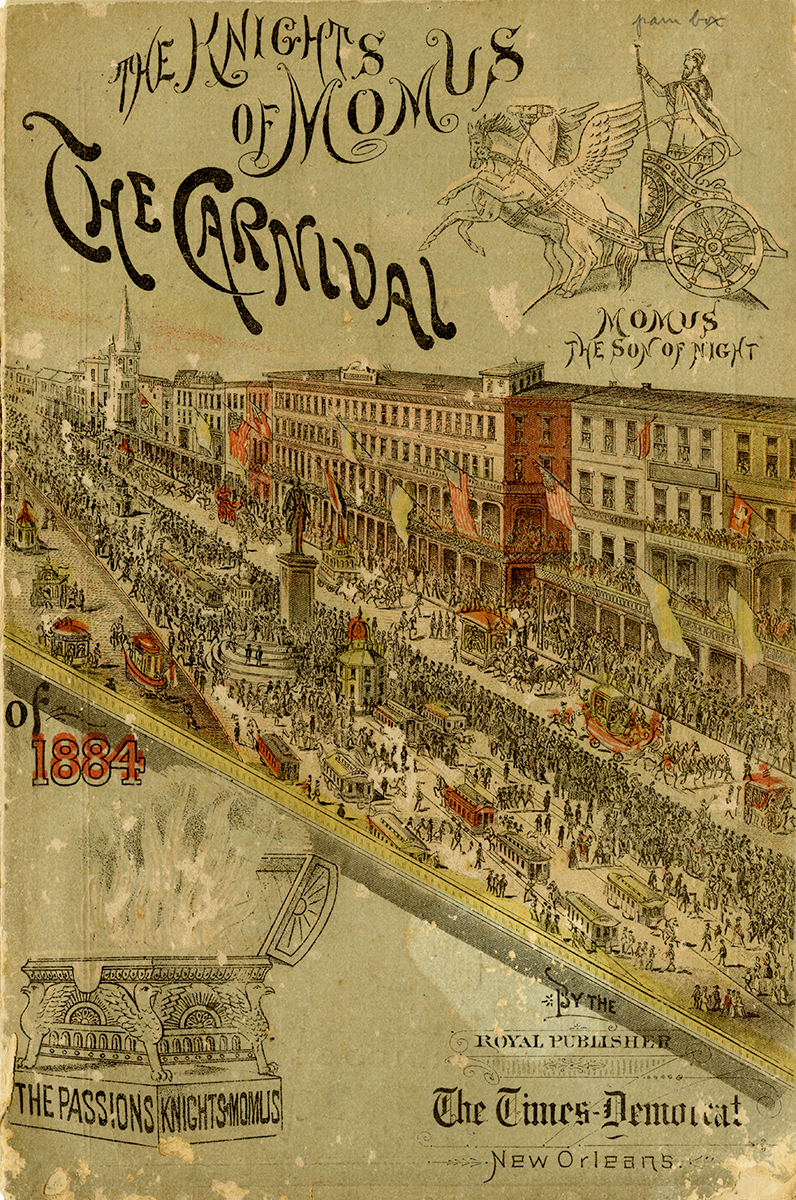 Cover of Knights of Momus souvenir booklet, 1884. Theme: "The Passions".
Cover of Knights of Momus souvenir booklet, 1884. Theme: "The Passions".
LLMVC Ephemera Collection. Subgroup VII, Travel & Tourism, Louisiana and Lower Mississippi Valley Collections, LSU Libraries, Baton Rouge, La. 
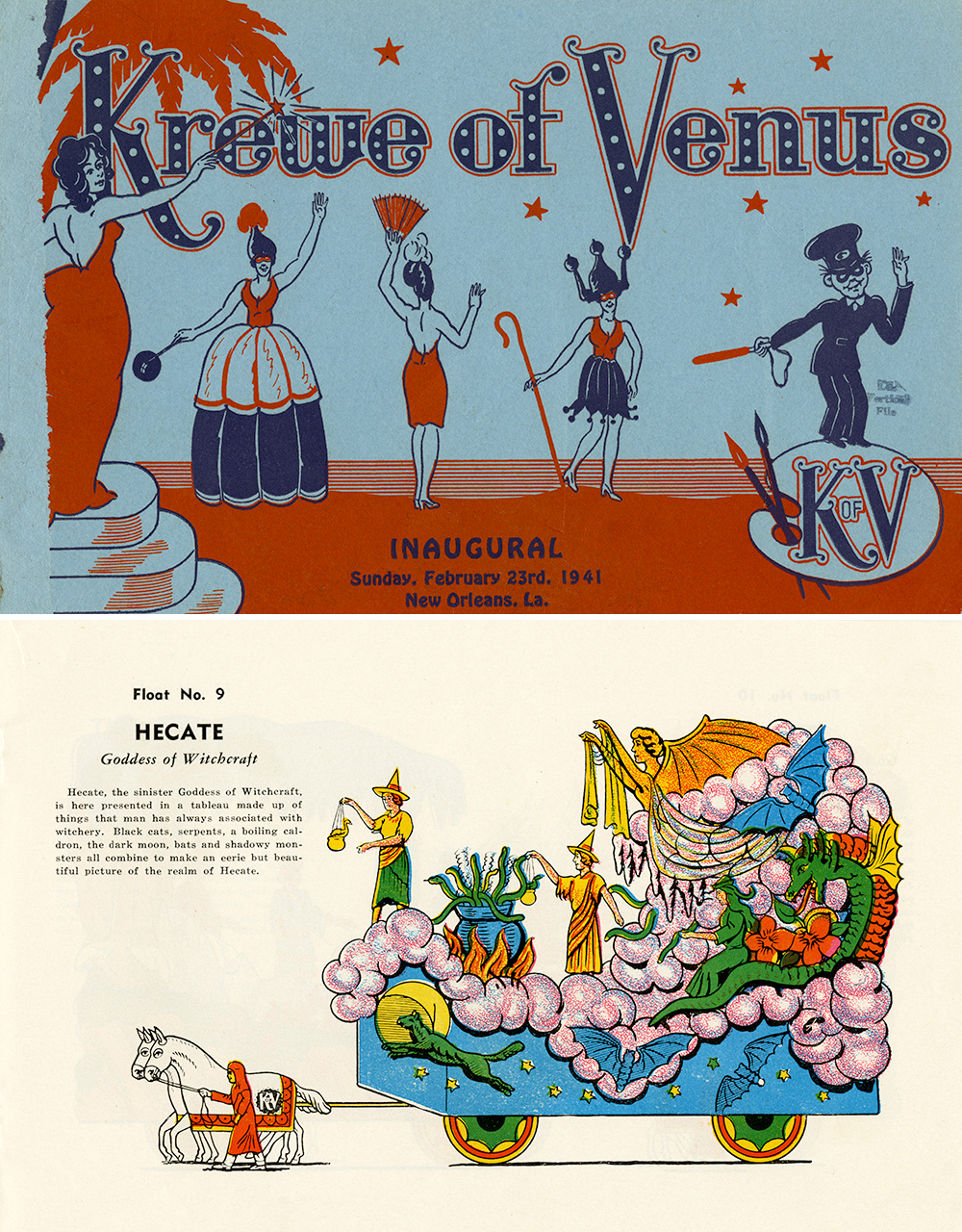 Cover and image from Krewe of Venus inaugural program, 1941. Theme: "Goddesses"; Float: "Hecate".
Cover and image from Krewe of Venus inaugural program, 1941. Theme: "Goddesses"; Float: "Hecate".
LLMVC Ephemera Collection. Subgroup V, Social, Civic & Educational Organizations, Louisiana and Lower Mississippi Valley Collections.  The Krewe of Venus inaugural program contains color renderings of floats, a forward, historical note, and local ads. The Krewe of Venus was the first all-female Mardi Gras krewe to parade in New Orleans. The year 1941 marked Venus’ debut to the New Orleans Carnival line-up. The entire program is digitized and available online in the Louisiana Digital Library.
The Krewe of Venus inaugural program contains color renderings of floats, a forward, historical note, and local ads. The Krewe of Venus was the first all-female Mardi Gras krewe to parade in New Orleans. The year 1941 marked Venus’ debut to the New Orleans Carnival line-up. The entire program is digitized and available online in the Louisiana Digital Library. 
Brochures and Pamphlets
Tourism brochures and pamphlets promoting Mardi Gras events are an additional source material. Publications from railroad companies and the Tourist Bureau of Louisiana often capitalized on Carnival. They also prove to be unique time capsules of Carnival seasons past. Many of these publications include brief histories concerning Carnival, traditions, and the city of New Orleans.
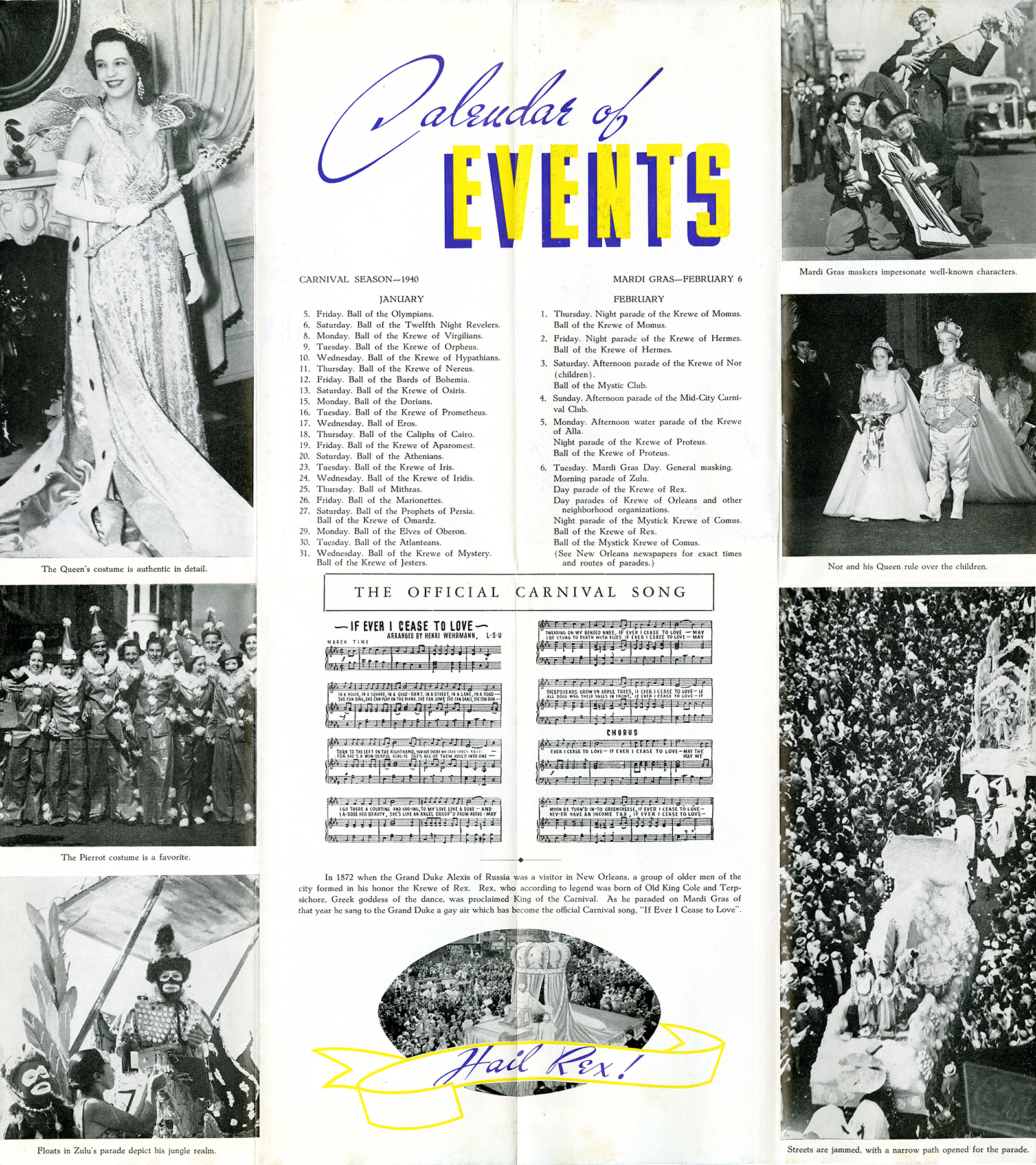 Interior foldout from Mardi Gras: Come to New Orleans, Tourism Bureau pamphlet, c.1940.
Interior foldout from Mardi Gras: Come to New Orleans, Tourism Bureau pamphlet, c.1940.
LLMVC Ephemera Collection. Subgroup VII, Travel & Tourism, Louisiana and Lower Mississippi Valley Collections, LSU Libraries, Baton Rouge, La. 
LSU Krewe of the Tiger
LSU even had its own krewe back in 1994. The Krewe of the Tiger had what appears to be a brief run on campus in the 1990s. This was simply a Mardi Gras ball sponsored by Residential Life and held at the Student Union. No indication of a campus procession or parade.
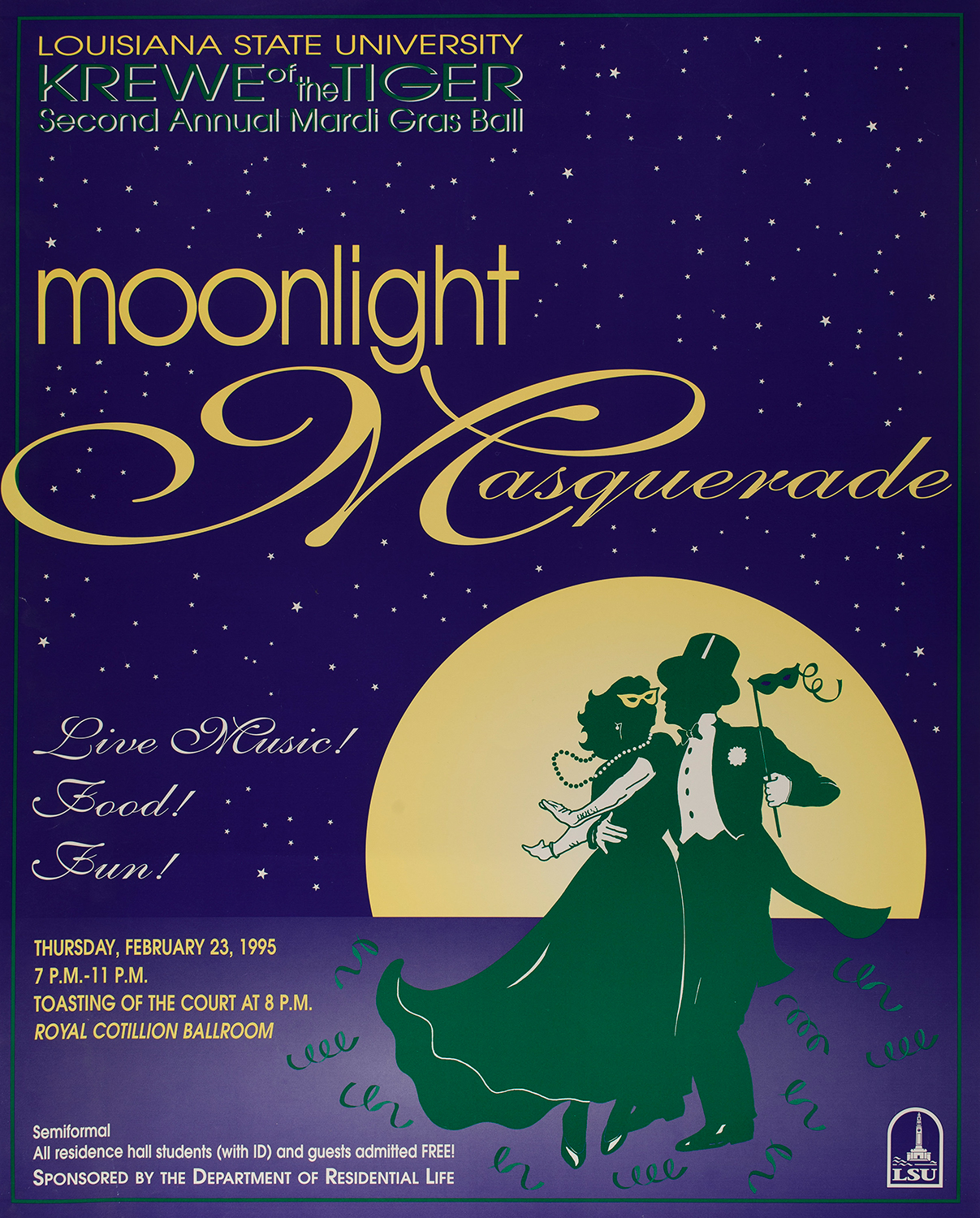 Krewe of the Tiger poster, 1995.
Krewe of the Tiger poster, 1995.
Louisiana State University Residential Life Posters, A0308, Louisiana State University Archives, LSU Libraries, Baton Rouge, La.  A collected assortment of Mardi Gras-related materials from 1875 to 1980 is available online in the Louisiana Digital Library. Digitized selections include photographs, programs, invitations, and other selected items available in several manuscript collections found in Special Collections.
A collected assortment of Mardi Gras-related materials from 1875 to 1980 is available online in the Louisiana Digital Library. Digitized selections include photographs, programs, invitations, and other selected items available in several manuscript collections found in Special Collections.  Additional digitized Mardi Gras ephemera relating to this article is available on Flickr.
Additional digitized Mardi Gras ephemera relating to this article is available on Flickr.  REFERENCE MATERIALS Mardi Gras: New Orleans Mardi Gras treasures: invitations of the Golden Age Mardi Gras treasures: float designs of the golden age ADDITIONAL READING Mardi Gras Day The Mardi Gras Indians The "Baby Dolls”: breaking the race and gender barriers of the New Orleans Mardi Gras tradition
REFERENCE MATERIALS Mardi Gras: New Orleans Mardi Gras treasures: invitations of the Golden Age Mardi Gras treasures: float designs of the golden age ADDITIONAL READING Mardi Gras Day The Mardi Gras Indians The "Baby Dolls”: breaking the race and gender barriers of the New Orleans Mardi Gras tradition
